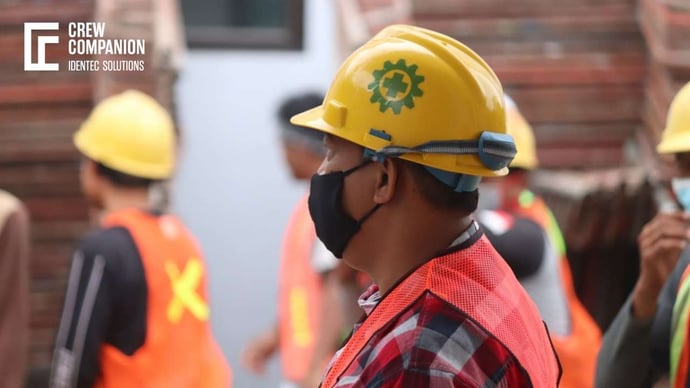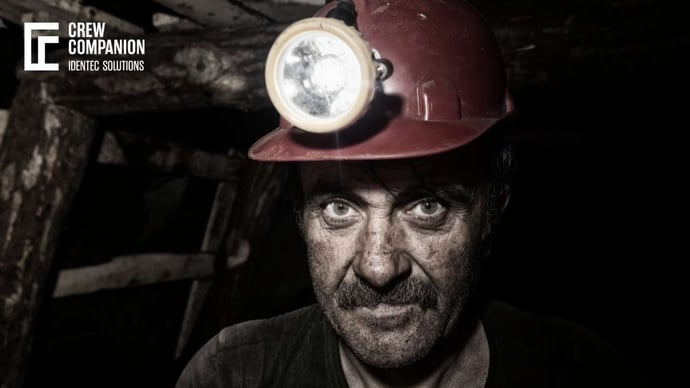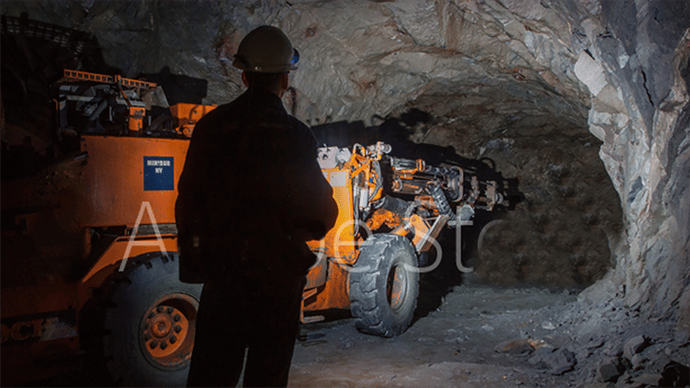Safety Training Equipment: Blending Training with Real-World Scenarios
| Written by Michal Wozniakowski-Zehenter

No video selected
Select a video type in the sidebar.
Are VIRTUAL REALITY SIMULATIONS Crucial safety Training Equipment?
Virtual Reality, or VR, is changing how miners learn to stay safe by giving them a wonderful way to practice, unlike antiquated teaching. VR lets trainees be part of real-life mining situations but without the actual dangers of being underground. This is so that all of the working crew can safely deal with tricky and unexpected situations when something goes wrong during mining, while they have to know how to behave properly in the real world. In this technology-supported form of training, miners end up in virtual worlds that are almost like the real mine locations they work in; these virtual realities come with all the gear and even scary events, such as tunnel collapses or toxic gas. Practising this way is key to understanding why safety steps and specific ways to do things in the mine matter. Plus, with VR, when learners do things like handle tools or react to emergencies, they see what happens right away, making it easier to learn and remember safety rules.
One of the best things about VR for staying safe on the job is that it lets miners rehearse critical "what if" scenarios over and over—something you can't do safely for real; this helps them feel surer of themselves and better at thinking fast when there's no room for taking your time. Also, this program can be recalibrated to match the exact location and equipment these miners use, which makes the mining safety training extremely connected to their actual work; the great part is that a large number of people can have training at once without making it more effective. VR engages you in learning and gives everyone that “actually doing it” tenor, which makes training more exciting and matters a lot; this could mean fewer accidents onsite since miners will be doing their jobs knowing what to do and being focused on the safety changes VR practice brings. So yes, VR is like this powerful classroom concept for zero-harm mining training.
BACK TO REALITY
Practising in setups that look and feel like real mines is a good way to get better at staying safe; these practice spots can be special parts of mining training places or certain areas in real mines set up for learning without danger, complete with genuine mining-related issues. Working hands-on with the actual equipment and situations helps out, as does using virtual reality for training. It makes the knowledge solid and useful since real hands-on work is involved; to keep things secure, these training spots have things like safety rails and plans for urgent situations so people learning there won’t face real risks; this lets miners try out their skills in a location where mistakes won’t cause harm, which is a great way to learn.
Having a coach watch and help out right away is extremely important during practice; they can tell people what they’re doing right or wrong and give advice on how to do better, which makes the lessons hit home and has a bigger effect on how well they'll do at work. Plus, these real-life practice events are perfect for growing skills like working together and talking things out properly, which is what you need for a team that knows how to stay safe. Tailoring training to specific related things like what a person or team needs to be better at makes sure everyone gets the most they can out of these exercises; this custom practice means all miners get training that speaks to their actual needs and goals, which really steps up the quality of how well everyone learns to be safe at work.
What Part Plays REAL-TIME MONITORING In Safety Training?
Keeping miners safe at work is getting better and smarter because of another safety training equipment – real-time monitoring devices. Location devices based on RTLS keep an eye on trainees while they're learning. It gives everyone's exact location in real-time to show trainers where potential adjustments should be made. All kinds of sensors are used to monitor if someone's stressed and to make sure the location is safe, but there are also video systems to watch how trainees do the work. What's great about this is how much the training can be made right for each person. If someone's edging face-first into trouble, maybe they can't handle gear just right under stress, the trainer can reconfigure things so they get better quickly and sure; tailoring instruction like this means miners learn faster and build solid confidence in what they're doing (learn more about blasting safety).
This technological approach doesn't help because it's custom -- it lifts how good the training is and ensures everyone follows the rules on safety. All the data picked up by monitoring makes certain that training stays up with what the mining business needs and all of the data goes right back into tweaking the training, making it even more efficient every time. Personalized feedback and recognition based on their performance can further motivate them, making the training more interactive and rewarding. This tailor-made and data-driven training approach improves safety skills and aligns with the mining industry's evolving needs.

Safety Training Equipment: Emerging Technologies in Mining Safety Training
Mining safety training is constantly evolving, driven by the adoption of new technologies that enhance the learning experience and effectiveness. One such advancement is the integration of augmented reality (AR) technology into training programs. AR overlays digital information onto the physical environment, allowing trainees to interact with virtual elements while engaging with real-world objects. This technology helps miners visualize complex systems and processes, such as underground ventilation or machinery operations, in a controlled and immersive manner. Additionally, AR-based training can be tailored to individual learning styles, ensuring that all trainees receive the most effective education possible. The immersive nature of AR improves knowledge retention. Studies show that learners remember 90% of the material they actively engage with, compared to only 10% from reading or listening. (2)
Another significant development is the use of machine learning algorithms to analyze training data. By examining performance metrics and feedback, these algorithms can identify patterns and suggest improvements to training programs. This data-driven approach allows trainers to continuously refine and adapt their methods, ensuring they remain relevant and effective as mining operations evolve. Moreover, predictive analytics can help identify potential safety risks and recommend proactive measures to mitigate them, enhancing overall safety outcomes.
Furthermore, incorporating mobile technology into safety training programs has increased accessibility and convenience for trainees. Mobile apps provide on-the-go access to training materials, enabling miners to learn quickly and revisit important information whenever needed. These apps can also facilitate communication between trainees and instructors, fostering a collaborative learning environment and promoting continuous improvement.
FAQS
What safety training equipment is most popular in mining?
In the mining industry, ensuring the safety of workers is a top priority, and a variety of safety training equipment is utilized to educate them about potential hazards. Training kits for personal protective equipment (PPE) are crucial, teaching workers how to correctly use helmets, safety glasses, hearing protection, respirators, high-visibility clothing, and gloves. First aid training supplies, including first aid kits, CPR manikins, and automated external defibrillators (AEDs), are essential for instructing workers on how to respond to injuries.
Fire safety equipment, such as fire extinguishers, fire blankets, and safety suits, is used to train workers on how to react in case of a fire. For rescue and emergency evacuation scenarios, stretchers and rescue dummies are employed to practice carrying injured workers to safety. Virtual reality (VR) simulators offer a modern approach by simulating hazardous situations, allowing workers to safely practice their response to emergencies like cave-ins and equipment failures.
Training tools for gas detection and ventilation are critical for teaching workers how to use gas detection devices properly and maintain adequate airflow to prevent explosions and asphyxiation. Electrical safety equipment is also important, focusing on the safe handling of electrical equipment and the use of lockout/tagout systems to avoid electrical accidents. Heavy equipment simulators prepare operators for the safe operation of machinery such as loaders, dozers, and haul trucks, ensuring they can handle real equipment more safely.
TAKEAWAY
Adding Virtual Reality to mining safety equipment is a knowledgeable overall plan to get miners ready for the tough parts of their jobs; this method puts together the newest technology for hands-on learning and practice in situations in the real world and includes instant feedback to make sure they get safety rules. VR simulations let miners deal with what feels like real mining issues and threats, where they can try out their responses without actually being in danger. Pair this with hands-on training on the conditions they'll find in mines, but safer, that helps connect all the book learning to real skills. Also, watching miners train and giving them instant feedback means training programs can be made for them. It also helps miners keep getting better. This fancy way to train miners shows that the industry cares a lot about keeping them safe. It's promising to keep setting higher goals for safety. The way mining companies focus on helping and giving power to their workers by spending on knowledgeable training shows they care about their safety, not only fulfilling the standards. As technology gets better and new safety issues appear, the mining business vowing to adjust and use the best training ways will be important for a much safer, stronger mining future.
Delve deeper into one of our core topics: Mining Safety
Glossary
Real-Time Locating Systems (RTLS) - also known as real-time tracking systems, are designed to identify and track the location of objects or people automatically in real time, usually within a building or an enclosed area. In wireless RTLS, tags attached to objects or worn by people send their signals to fixed reference points; these signals are processed at the reference points to find their precise locations.
Sources:
(1) https://www.msha.gov/sites/default/files/Compliance_Enforcement/Technology-Resources-Mobile-Equipment.pdf
(2) https://www.canadasafetytraining.com/Safety_Blog/how-safety-training-improves-with-virtual-augmented-reality.aspx
(3) https://en.wikipedia.org/wiki/Real-time_locating_system
Note: This article was updated on the 10th of January 2025

Author
Michal Wozniakowski-Zehenter, Marketing Manager
Michal Wozniakowski-Zehenter is an experienced marketing and project management professional. He spent most of his career on projects with a strong focus on digital marketing and event management. He is a very active voice representing offshore and mining industries through social media channels. Michal writes mainly about offshore oil and gas, renewable energy, mining and tunnelling. Compiling and sharing the knowledge within industries is one of his goals.




